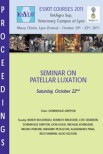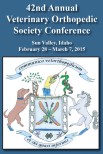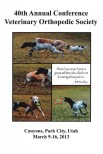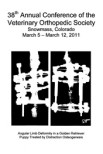To date it is unclear whether cementless total hip replacement (THR) in dogs is of clinical advantage in comparison to cemented THR with regard to lameness improvement. Thus the aim of this study was to compare objectively the development of the gait pattern after cemented and cementless THR in dogs. For this purpose, 18 adult dogs with hip dysplasia underwent computer-based gait analysis on an instrumented treadmill prior to unilateral THR and then again ten days, four weeks and four months after surgery. Analysed kinetic parameters were symmetry indices (SI) of vertical ground reaction forces (GRF), which included peak vertical forces (PFz), mean vertical forces (MFz), vertical impulse (IFz), and vertical ground reaction forces of the arthroplasty limbs only. Analysed kinematic parameters were range-of-motion and the flexion and extension angles of hip, stifle and hock joints. The symmetry indice for PVF, MFz and IFz decreased to a value less than six in both THR groups four months after surgery, which is defined as not lame. Improvement in lameness of the arthroplasty limbs during the examination period of four months was not significantly different between the cemented and cementless groups. The results suggest that within a short-term observation period of four months after surgery, neither cementless nor cemented THR have a greater advantage with regard to lameness improvement. Additional studies with larger pools of subjects and longer time periods for follow-up examinations are necessary to verify these findings.
Computer-based gait analysis of dogs: Evaluation of kinetic and kinematic parameters after cemented and cementless total hip replacement.
Date
2012 Sep 13
Journal
VCOT
Volume
25
Number
5
Pages
375-84









